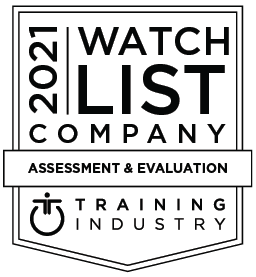Arriving 10 minutes late, I quietly took a seat in the back row. At the front of the room, the session leaders spoke what must have been profound words for the 200 people gathered that day, as nearly every person sat silently, head bowed.
This reverie continued for another 70 minutes until one of the session leaders spoke in a very different tone, bringing the gaze of the audience up to focus on him:
“Please! Could you just ignore your phones, tablets, and laptops for the final ten minutes?”
Mind you, this wasn’t a religious service — it was a sales meeting. And the audience of highly compensated, global sales professionals were in this session to learn the tactics required to execute the new go-to-market strategy.
I couldn’t help but think about how much this 90-minute session cost: At least $28,000 in salaries; another $25,000 for its share of travel expenses; and, most damagingly, the incalculable short-and long-term opportunity costs back in the field simply because the audience wasn’t paying attention.
Sadly, because it happens far too frequently at sales and other large company meetings, no one seemed bothered by the outcome of this session.
Fortunately, the root causes that drain the ROI out of meetings and sales training events like these are not only identifiable, they’re preventable. Let’s take a closer look at the top three reasons large meetings and training events too often start to resemble religious services, with audience members burying their heads in their phones or tablets.
Root Cause #1: A seemingly endless flow of hard-to-compartmentalize information, encased in a thick fog of textually dense, bullet-driven slides.
Here’s what to do about it:
- Streamline! Instead of drowning the audience in content, focus on must-know information. Then, have a plan to follow up with should-know information at a time when the audience can digest it.
- Break content into manageable chunks. When planning content for a lengthy session, don’t think of it as one long presentation — but as a series of short, high impact presentations linked together.
- Think visually. Keep slides simple, graphically intuitive, and with a minimum of text. If needed, create a second, more detailed companion document to send out post session.
Root Cause #2: Rapid-fire verbal delivery that even native English speakers find hard to follow.
Here’s what to do about it:
- Punctuate with pauses. Pausing is the only punctuation we have in spoken language. Exaggerating your pauses just a little will make it much easier for your audience to follow along and process what they’re hearing. Plus, it provides the space you need to both think and breathe.
- Enunciate! Amplify your vocal energy just a bit. This naturally boosts both your enunciation and vocal inflection, making listening almost effortless for your audience.
- Define acronyms and limit jargon. Don’t assume that your audience will understand these letters and words just because they’re used regularly in your world.
Root Cause #3: A lack of audience connection and memory hooks.
Here’s what to do about it.
- Tell emotionally connected stories. A smartly constructed, well-told story draws your audience into your presentation and drives your content straight into their memory.
- Grab attention with short anecdotes. Similar to a story, but much shorter in duration, anecdotes embedded throughout your content help to spike the attention of your audience.
- Improve understanding with intuitive analogies. The more unfamiliar an audience is with the concepts in your presentation, the more important it becomes to leverage the power of good analogies to ensure comprehension.
Fail to address these root causes, and your audience will spend far more time paying attention to their smart devices than to your content. The investment of time and energy required to plan and prepare a presentation compelling enough to dissuade multitasking and keep your audience’s attention is insignificant compared to the cost of your audience’s time and travel.
And, when you factor in the opportunity costs involved, it’s one of the smartest investments you can make.
Is your sales training getting the results you expect? In our experience, poor communication skills are the number one reason sales training investments flop.
To learn how Mandel can help you dramatically improve sales training effectiveness — as well as the performance of your sales team — learn about Mandel’s Influencing Skills Training. Or, contact us anytime to discuss your current sales challenges and discover how we can help.










